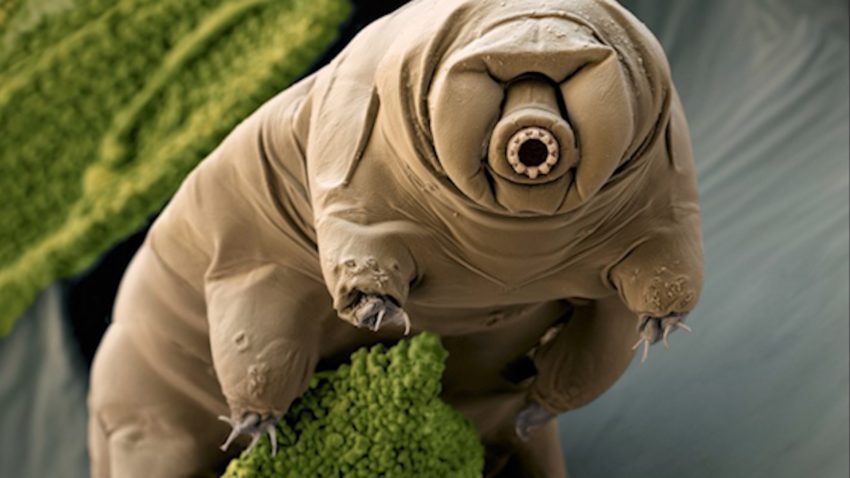Before last night, I had never heard of the creature known as a tardigrade. But once I came across it, I still could hardly believe it existed.
I think you can see why just by looking at it:
Yes, that really exists. It may help to know that it’s teeny tiny, anywhere between 0.05 millimeters and 1.2 mm (0.002 to 0.05 inches) long.
And it’s nearly indestructible – to a science-fictionish degree:
Research has found that tardigrades can withstand environments as cold as minus 328 degrees Fahrenheit (minus 200 Celsius) or highs of more than 300 degrees F (148.9 C), according to Smithsonian magazine. They can also survive radiation, boiling liquids, massive amounts of pressure of up to six times the pressure of the deepest part of the ocean and even the vacuum of space without any protection. A 2008 study published in the journal Current Biology found that some species of tardigrade could survive 10 days at low Earth orbit while being exposed to a space vacuum and radiation.
In fact, water bears [a nickname for tardigrades] could survive after humanity is long gone, researchers found. Scientists from Harvard and Oxford universities looked at the probabilities of certain astronomical events — Earth-pummeling asteroids, nearby supernova blasts and gamma-ray bursts, to name a few — over the next billions of years. Then, they looked at how likely it would be for those events to wipe out Earth’s hardiest species. And while such catastrophic events would likely wipe out humans, the researchers found little tardigrades would survive most of them…
“To our surprise, we found that although nearby supernovas or large asteroid impacts would be catastrophic for people, tardigrades could be unaffected,” David Sloan, a co-author of the new study and researcher at Oxford, said in a statement. “Therefore, it seems that life, once it gets going, is hard to wipe out entirely. Huge numbers of species, or even entire genera may become extinct, but life as a whole will go on.”…
In many conditions, they survive by going into an almost death-like state called cryptobiosis. They curl into a dehydrated ball, called a tun, by retracting their head and legs. If reintroduced to water, the tardigrade can come back to life in just a few hours.
While in cryptobiosis, tardigrades’ metabolic activity gets as low as 0.01 percent of normal levels, and their organs are protected by a sugary gel called trehalose…
In cold temperatures, they form into a special tun that prevents the growth of ice crystals.
…When the water they live in is low on oxygen, they will stretch out and allow their metabolic rate to reduce. In this state, their muscles absorb oxygen and water well enough that they can survive.
In 2016, scientists revived two tuns and an egg that had been in cryptobiosis for more than 30 years.
A lot more at the link.
Even though tardigrades are animals, their adaptability reminds me of this song about a certain plant. A fictional plant, as it turns out, but a versatile one:


